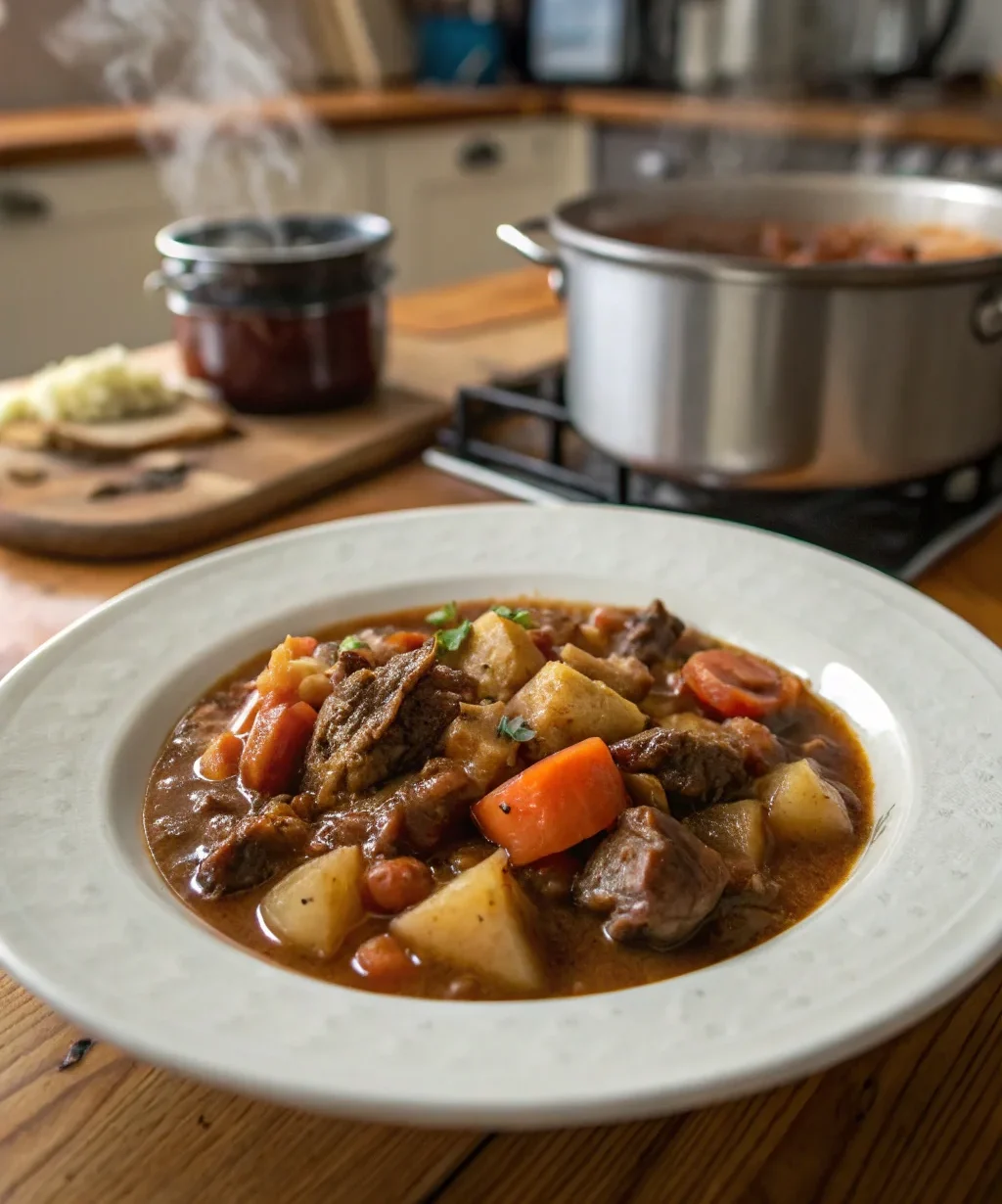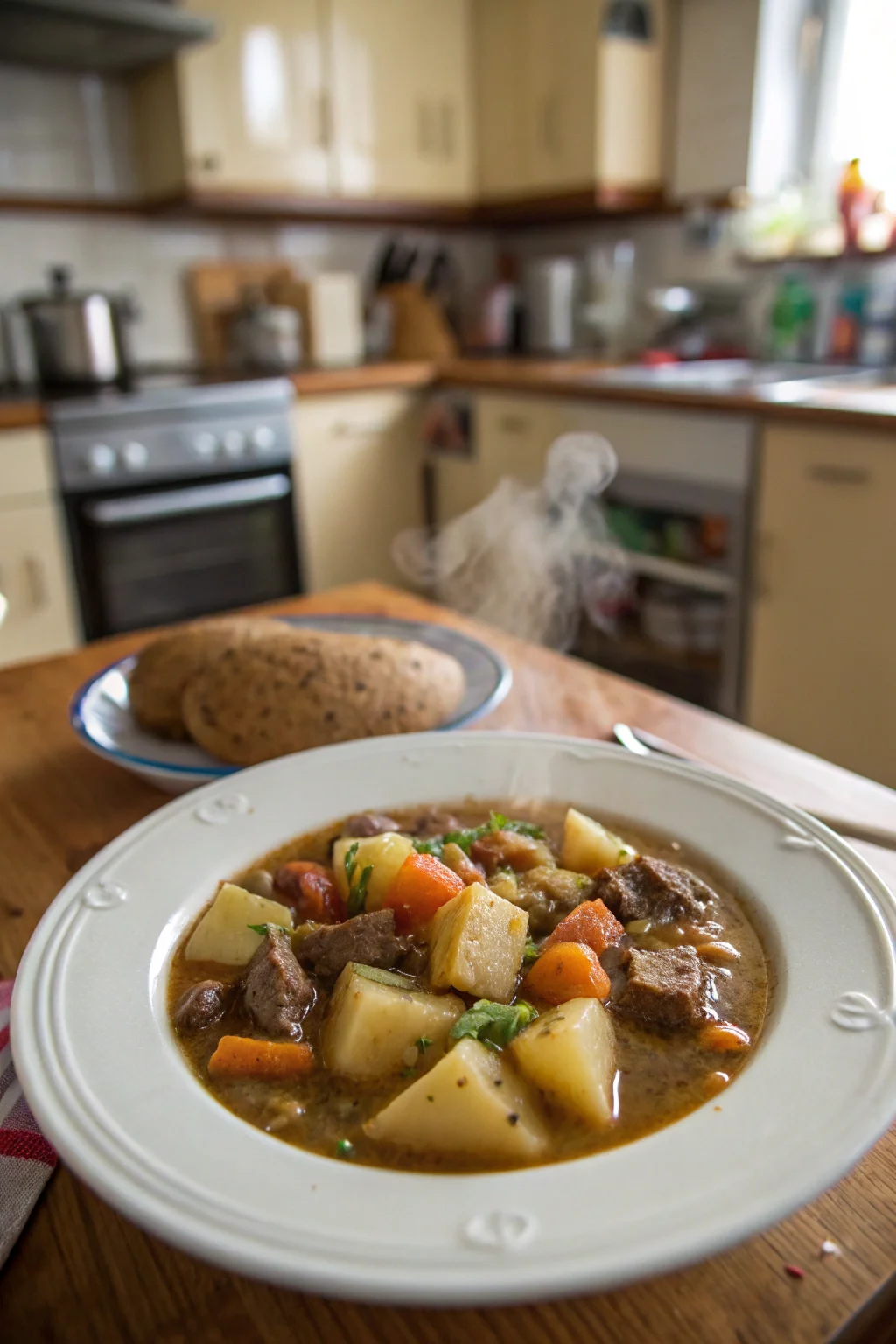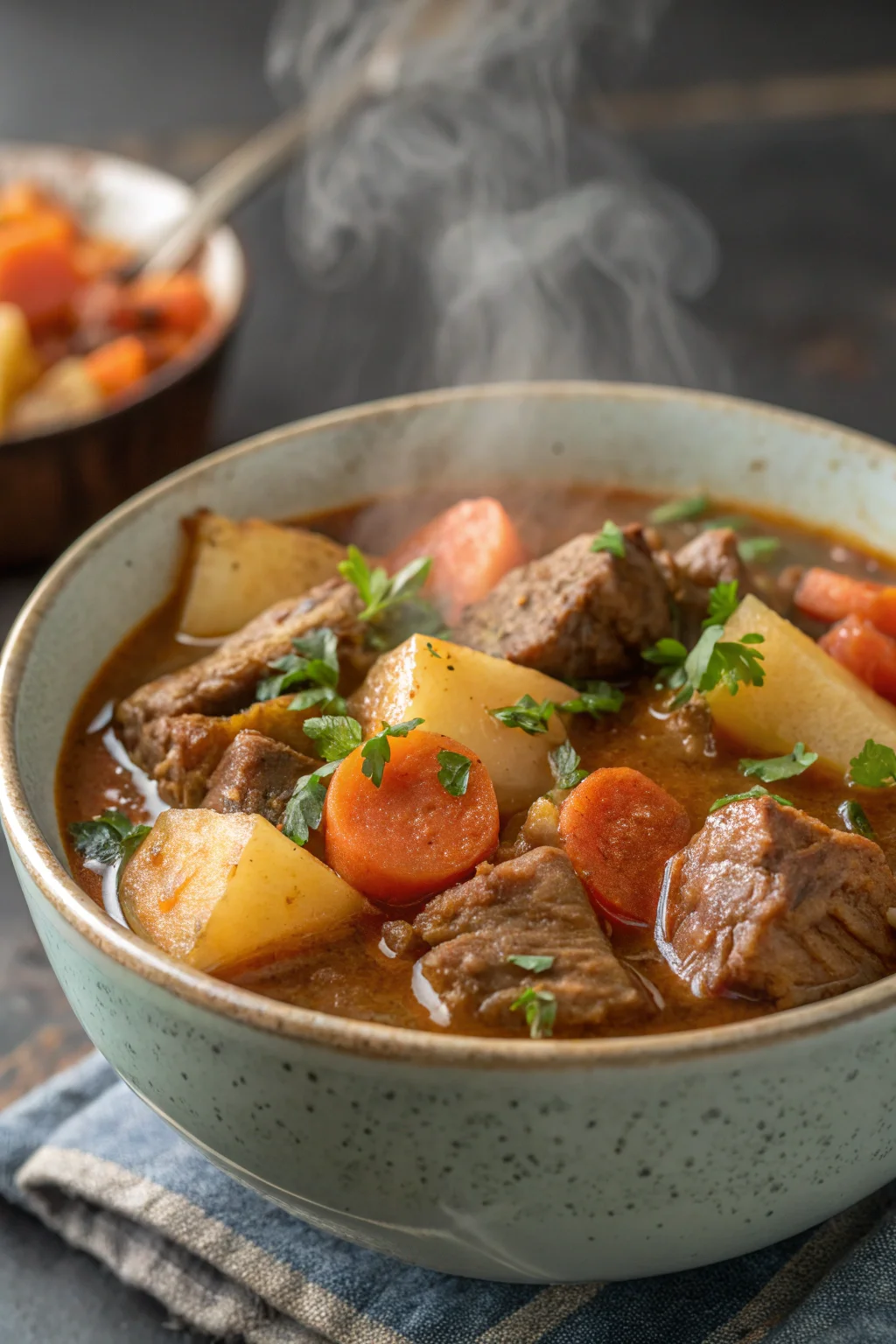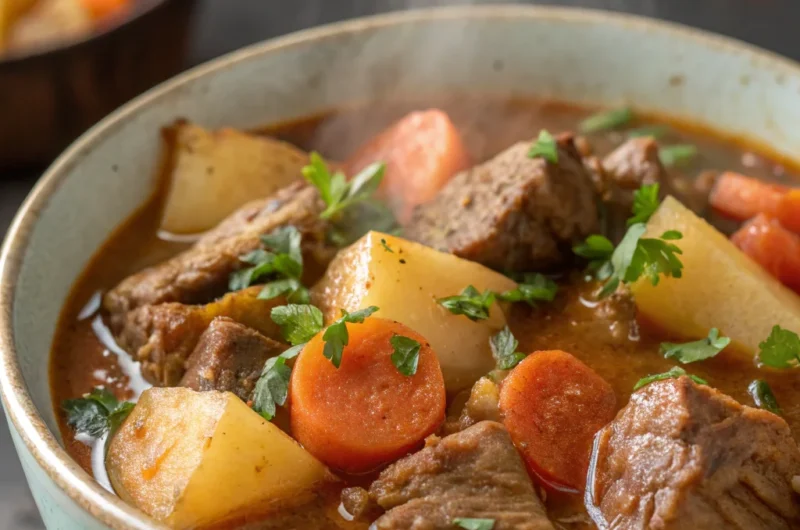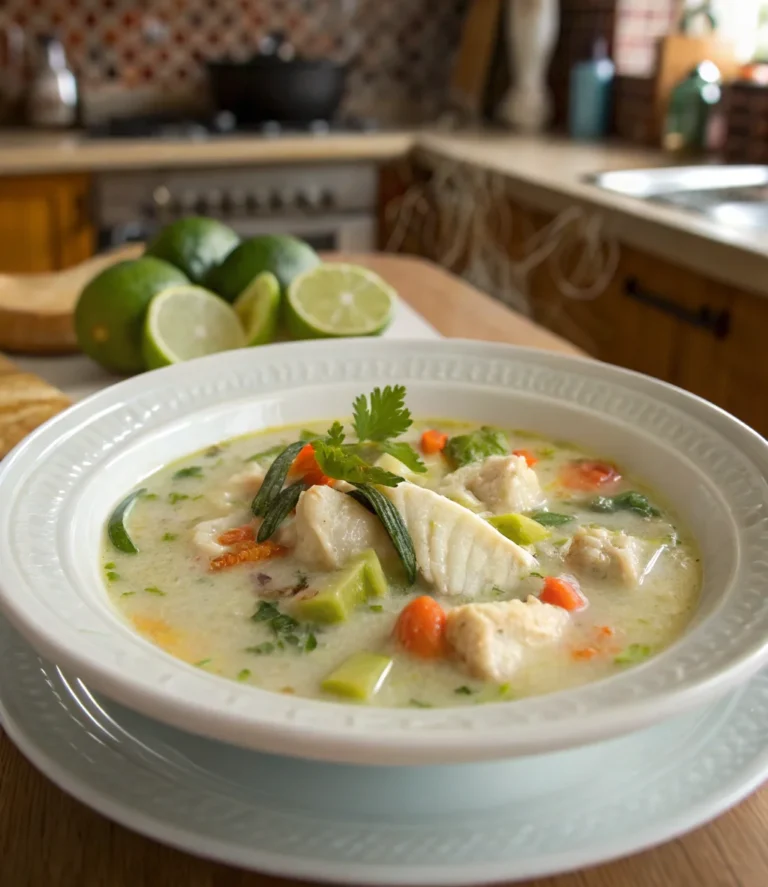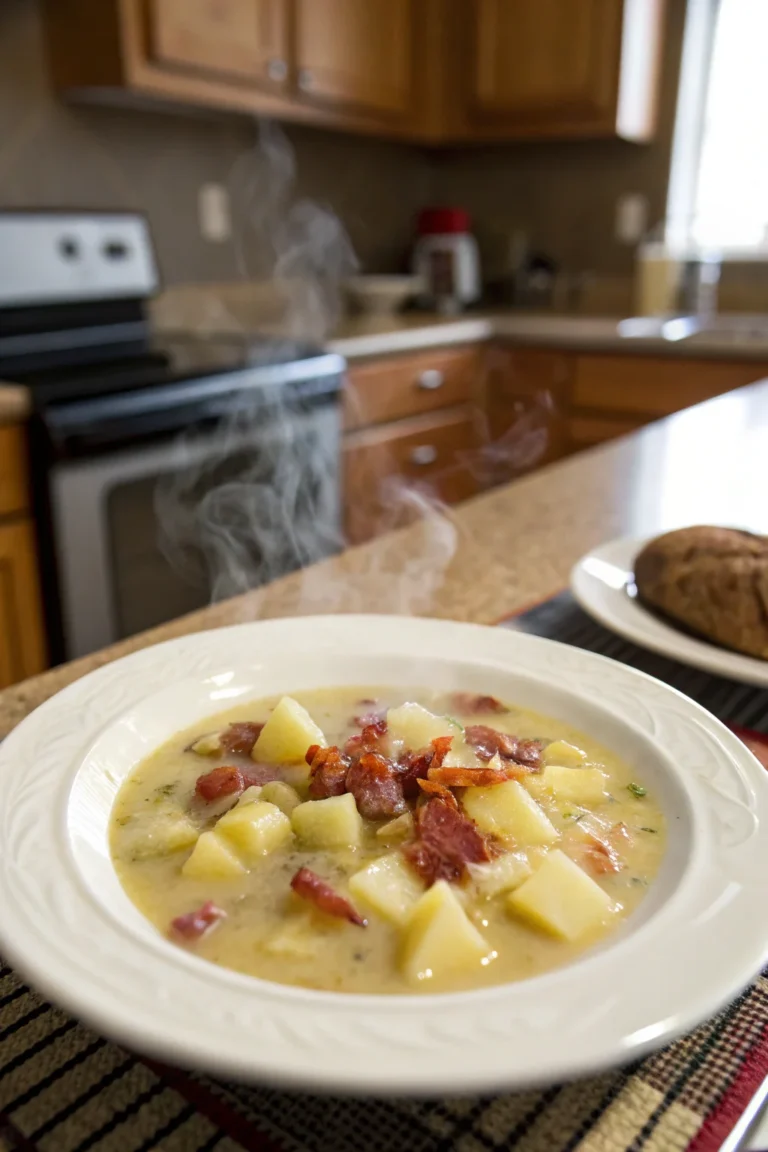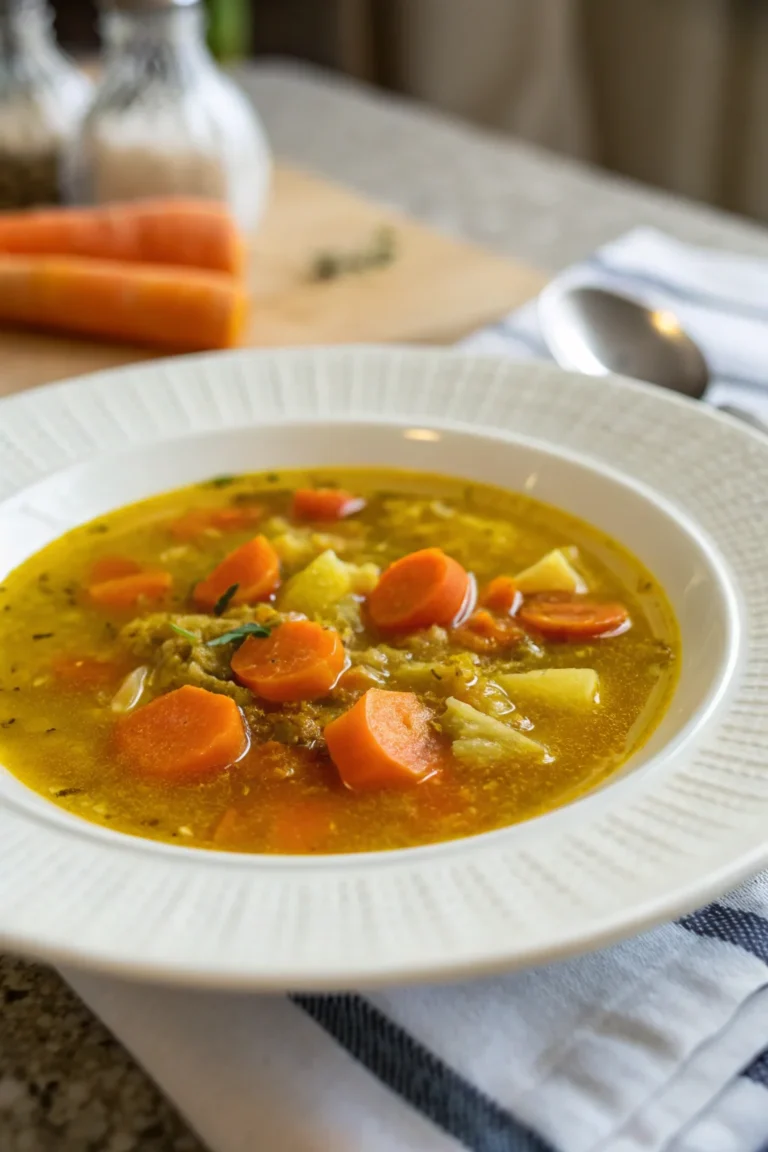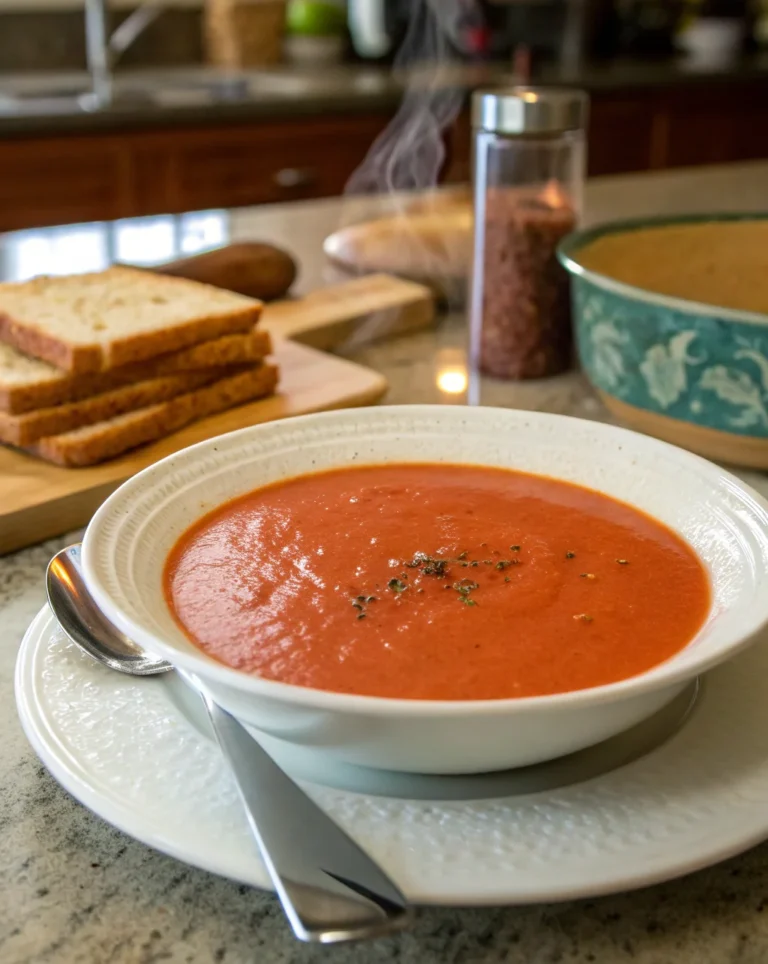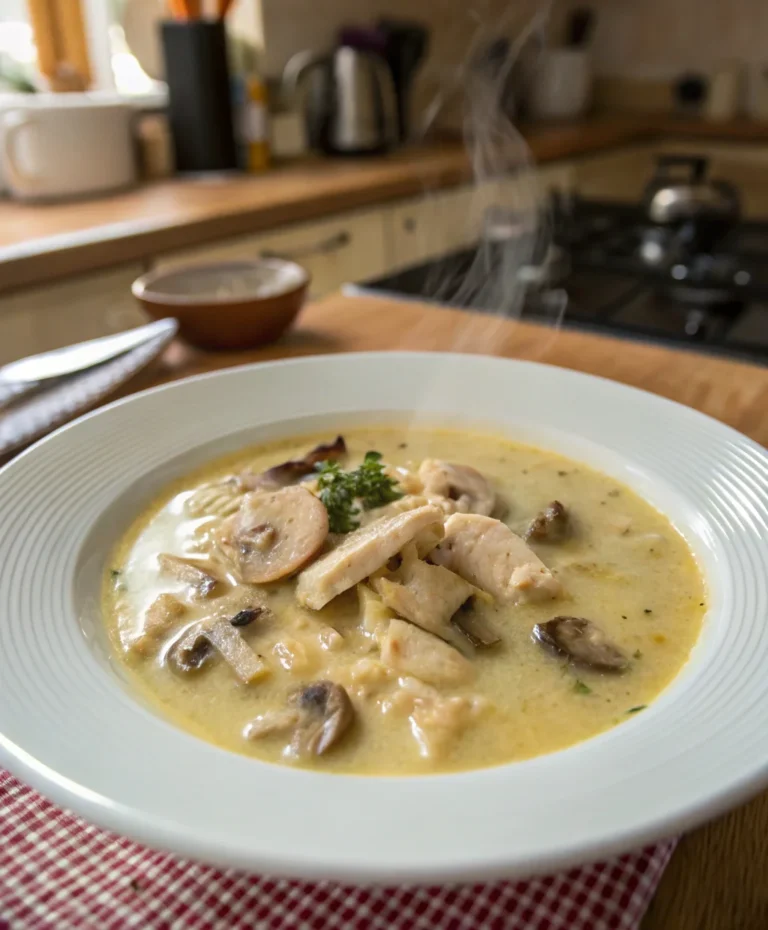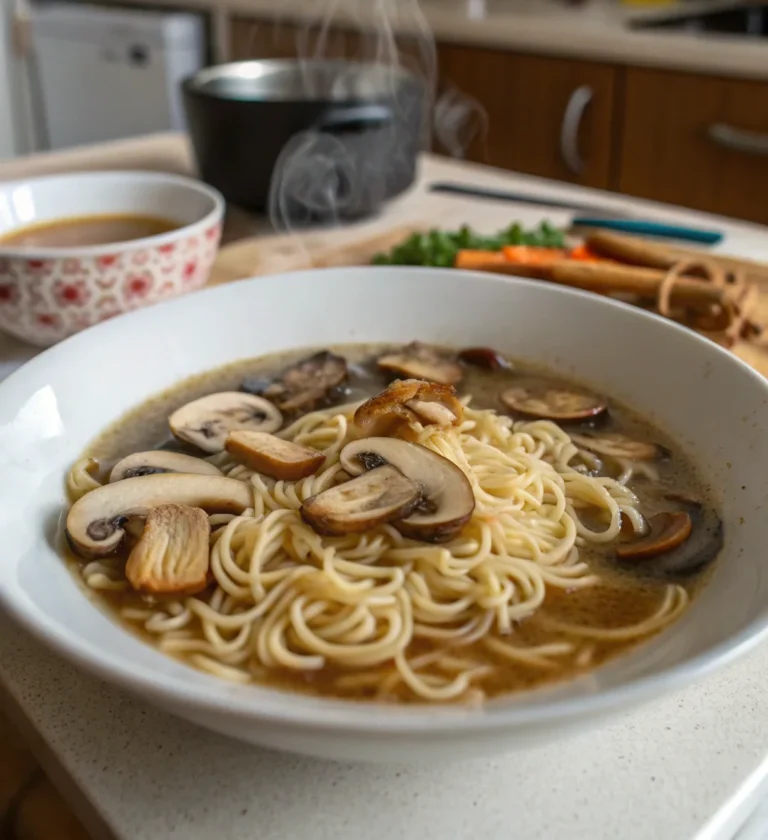Viking Stew Soup
Introduction
When the temperatures drop and the days grow shorter, there’s nothing quite like the aroma of a hearty stew simmering on the stove to bring warmth and comfort to your home. Viking Stew, with its roots in the age-old culinary traditions of Scandinavia, is a dish that promises not only to fill your stomach but also to transport you to a time when hearty meals were the cornerstone of daily life. Inspired by tales of my grandmother’s kitchen, where every meal was a celebration of flavor and family, this recipe is a tribute to those who find joy in the simple act of cooking. Imagine a cozy weekend afternoon, the scent of pork mingling with sweet berries, and the anticipation of sharing a meal that echoes the heartiness of Viking feasts.
Table of Contents
Why This Recipe Works
• Rich Flavor Profile: The combination of pork, honey, and berries creates a sweet and savory balance that is irresistible.
• Wholesome Ingredients: With vegetables like cabbage, carrots, and fennel, this stew is as nutritious as it is delicious.
• Simple Steps: Despite its complex flavors, Viking Stew is straightforward to prepare, making it accessible to cooks of all levels.
• Cultural Heritage: This dish is steeped in history, offering a taste of Scandinavian culinary traditions right in your kitchen.
• Perfect for Gatherings: With its generous yield, Viking Stew is ideal for feeding a crowd, perfect for family dinners or festive occasions.
Ingredients
• Pork Shoulder Roast: Provides a tender, flavorful base when cooked slowly.
• Kosher Salt: Enhances the natural flavors of the meat and vegetables.
• Honey: Adds a subtle sweetness that complements the berries.
• Fresh Blackberries: Contributes a tart, juicy element; can substitute with other berries if desired.
• Lingonberry Jam: Introduces a unique tangy sweetness that is quintessentially Scandinavian.
• Cold Water: Ensures the stew’s flavors meld together during cooking.
• Garlic: Offers a fragrant depth of flavor.
• Dried Thyme & Ground Coriander: These spices add a warm, aromatic note to the stew.
• Yellow Onion & Leeks: Provide a savory base with a hint of sweetness.
• Brown Mushrooms: Add a hearty, earthy flavor.
• Green Cabbage: Offers a crunchy texture and mild flavor.
• Carrots & Fennel Bulbs: Bring sweetness and anise-like notes to the dish.
• Cilantro, Dill, & Fresh Thyme Leaves: Finish the stew with a burst of fresh, herbal flavors.
Step-by-Step Instructions
- Begin by Preparing the Ingredients: Cut the boneless pork shoulder roast into 2- to 3-inch chunks and gather the rest of your ingredients. This preparation will streamline the cooking process.
- Combine the Main Ingredients: In a large soup pot or Dutch oven, place the pork, 3 teaspoons of kosher salt, honey, fresh blackberries, lingonberry jam, and 6 cups of cold water.
- Bring to a Boil: Place the pot over high heat and bring the mixture to a boil. This helps to start the cooking process and blend the initial flavors.
- Season the Stew: As the stew comes to a boil, add the garlic cloves, 1 teaspoon of dried thyme, and 1 teaspoon of ground coriander. These spices will infuse the stew with aromatic warmth.
- Simmer the Stew: Once boiling, reduce the heat to low and let the stew simmer gently for 45 minutes. Stir occasionally to prevent sticking and ensure even cooking.
- Add the Vegetables: Stir in the diced yellow onion, leeks, and halved mushrooms. These will contribute additional layers of flavor and texture. Continue simmering until the meat is almost tender, about another 45 minutes.
- Incorporate More Vegetables: Add the chopped green cabbage, peeled and chopped carrots, and fennel strips. Simmer for approximately 30 minutes, or until both the vegetables and meat are very tender.
- Final Seasoning: Taste the stew and add more salt if necessary to suit your preference. The flavors should be well-rounded and savory.
- Serve and Garnish: Ladle the Viking Stew into bowls and sprinkle with torn cilantro leaves, chopped fresh dill, and fresh thyme leaves. These herbs add a bright finish to the dish.
Prep Time: 30 minutes
Cooking Time: 2 hours
Total Time: 2 hours 30 minutes
Yield: 6 Servings
Table: Calorie Breakdown for a Typical Serving
| Nutrient | Amount per Serving |
|---|---|
| Calories | 450 |
| Carbs | 25g |
| Protein | 35g |
| Fat | 20g |
| Sugar | 10g |
Patricia’s Tips for Success
Tip 1: Use a heavy-bottomed pot like a Dutch oven for even heat distribution and to prevent scorching.
Tip 2: Thoroughly wash leeks to remove any grit or sand, as this can affect the stew’s texture.
Tip 3: Let the stew rest off the heat for a few minutes before serving; this allows flavors to meld.
Tip 4: For a thicker stew, remove the lid during the last 15 minutes of cooking to let more liquid evaporate.
Tip 5: Taste and adjust seasoning two or three times during cooking to ensure the perfect balance.
Tip 6: If lingonberry jam is unavailable, cranberry sauce can be used as a substitute.
Tip 7: Feel free to add more herbs according to your taste preference for a more robust flavor.
Cooking Variations
Variation 1: Substitute pork with beef chuck roast for a different flavor profile while keeping the cooking method the same.
Variation 2: Add diced potatoes or parsnips along with the carrots for additional texture and heartiness.
Variation 3: Replace fresh berries with dried varieties for a more concentrated flavor; you’ll need to reduce the amount by half.
Variation 4: Try adding a splash of apple cider vinegar for a touch of acidity that enhances the stew’s complexity.
Variation 5: For a spicy kick, include a pinch of red pepper flakes when adding the thyme and coriander.
Serving Suggestions
Suggestion 1: Serve Viking Stew with a crusty loaf of sourdough bread or hearty rye for soaking up the rich broth.
Suggestion 2: A side of mashed potatoes or creamy polenta can complement the stew’s robust flavors beautifully.
Suggestion 3: Pair with a simple green salad dressed in a light vinaigrette to balance the stew’s richness.
Suggestion 4: For a Scandinavian touch, serve with pickled vegetables on the side, which add a delightful tang.
Suggestion 5: Offer a light, fruity red wine or a full-bodied ale for a beverage pairing that matches the stew’s depth.
Additional Thoughts
Viking Stew is more than just a dish; it’s a culinary journey that connects us to the past and the cultures that have shaped our eating habits today. The use of pork and berries is reminiscent of times when food was preserved naturally, and this combination brings a unique sweetness and depth to the stew. This recipe not only honors those traditions but also adapts them to suit modern palates. One of the joys of making Viking Stew is the way it fills the kitchen with its intoxicating aroma, a testament to the way food can create a sense of home and comfort. The process of simmering the stew slowly allows the ingredients to release their flavors gradually, resulting in a dish that is both rich and intricately layered. As you cook, take a moment to reflect on the history behind each ingredient and the story it tells. This stew is a canvas for creativity, allowing you to explore different variations and tailoring it to your family’s tastes. Whether you’re preparing it for a regular weeknight dinner or a special gathering, Viking Stew is sure to impress with its hearty goodness and vibrant flavors. It’s a dish that invites you to savor each bite and enjoy the company of those around you, much like the communal meals shared by the Vikings long ago. Cooking is, after all, an act of love and care, and this recipe is a beautiful expression of that sentiment.
Join the Conversation
Have you tried making Viking Stew? I would love to hear about your experience and any personal touches you added to the recipe! Share your thoughts, tips, or even a picture of your finished dish in the comments below. Let’s create a community where we inspire each other through our love of cooking and storytelling. Whether you’re a seasoned chef or a home cook just starting out, your insights are valuable and can help others in their culinary journey. Together, we can keep the spirit of Viking Stew alive and thriving in modern kitchens.
Conclusion
Viking Stew is a dish that brings warmth, flavor, and a touch of history to your dining table. With its roots in Scandinavian culinary traditions, it offers a hearty meal that is perfect for sharing with family and friends. The combination of pork, berries, and a medley of vegetables creates a dish that is both satisfying and nourishing. As you prepare this stew, you’ll find yourself immersed in the joy of cooking, the pleasure of creating something delicious from simple ingredients. Embrace the experience and let the flavors transport you to a time when meals were an adventure in taste and companionship. Enjoy every moment, from the first simmer to the last spoonful, and make Viking Stew a cherished part of your culinary repertoire.
Frequently Asked Questions
Q: Can I use frozen berries instead of fresh?
A: Yes, frozen berries can be used; just add them straight to the pot without thawing.
Q: Is there a vegetarian version of Viking Stew?
A: You can substitute the pork with hearty vegetables like potatoes and turnips for a vegetarian version.
Q: How can I store leftovers?
A: Store leftovers in an airtight container in the refrigerator for up to three days or freeze for longer storage.
Q: What can I use instead of lingonberry jam?
A: Cranberry sauce or red currant jelly can serve as good substitutes for lingonberry jam.
Q: Can I make this stew in a slow cooker?
A: Yes, adjust the cooking time to 6-8 hours on low, adding vegetables halfway through.
Q: Is it possible to halve the recipe?
A: Absolutely, simply halve all the ingredients and adjust the seasoning to taste.
Q: Can I add wine to the stew?
A: A splash of red wine can enhance the flavor; add it with the water and allow it to reduce slightly before simmering.
Viking Stew
Course: Main CourseCuisine: AmericanDifficulty: MediumThis Viking stew may seem simple, but it’s bursting with sophisticated flavors. Made with a variety of meats, berries, mushrooms, and root vegetables commonly found during the Viking era, this hearty dish is a true taste of history. Don’t worry if you can’t source wild boar – any meat will work perfectly in this recipe!
Ingredients
4 1/2 pounds boneless pork shoulder roast, cut into 2- to 3-inch chunks
3 teaspoons kosher salt, or to taste
1/4 cup honey
1 cup fresh blackberries, or other fresh berries
2 tablespoons lingonberry jam
6 cups cold water
3 cloves garlic, peeled
1 teaspoon dried thyme
1 teaspoon ground coriander
1 yellow onion, cut into large dice
2 leeks, washed thoroughly, cut into 1-inch pieces
10 large brown mushrooms, halved
1 small green cabbage, cut into 1-inch pieces
3 large carrots, peeled and cut into 2-inch pieces
2 fennel bulbs, halved and cut into 1/4-inch strips
1/4 cup torn cilantro leaves
1/4 cup chopped fresh dill
2 tablespoons fresh thyme leaves
Directions
- In a large soup pot or Dutch oven, combine the pork, salt, honey, berries, lingonberry jam, and cold water. Bring to a boil over high heat.
- Add garlic, dried thyme, and ground coriander while the stew is coming to a boil.
- Once boiling, reduce the heat to low and simmer gently for 45 minutes, stirring occasionally.
- Stir in the onion, leeks, and mushrooms, and continue simmering until the meat is almost tender, about 45 minutes.
- Add the cabbage, carrots, and fennel to the pot. Simmer until the vegetables and meat are very tender, around 30 minutes.
- Season with salt to taste.
- Ladle the stew into bowls and sprinkle fresh cilantro, dill, and thyme leaves over the top.
- Serve the stew hot, accompanied by crusty bread if desired.

